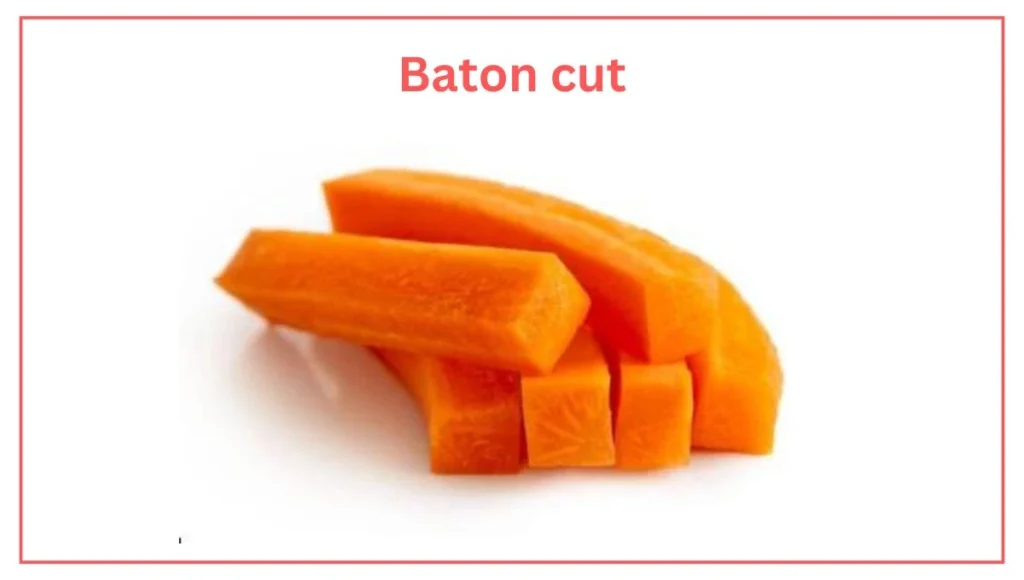Every cook should master these basic cuts of vegetables because different types shapes and sizes of vegetables, not only make the food appearance good but also help the food cook more easily, and taste better. Let us look at the 14 basic cuts of vegetables with size.
Vegetables basic cuts are:
- Brunoise (Fine Dice)
- Chiffonade (Shredding)
- Julienne (Match Stick Cuts)
- Macedoing (Small Dice)
- Parmentier(Medium dice)
- Paysanne
- Carre (Large Dice)
- Rondelle/Washer
- Wedges
- Slicing
- Mincing
- Baton
- Tourne/Chateau
- Crushing
Now let’s see the cuts of vegetables in the picture
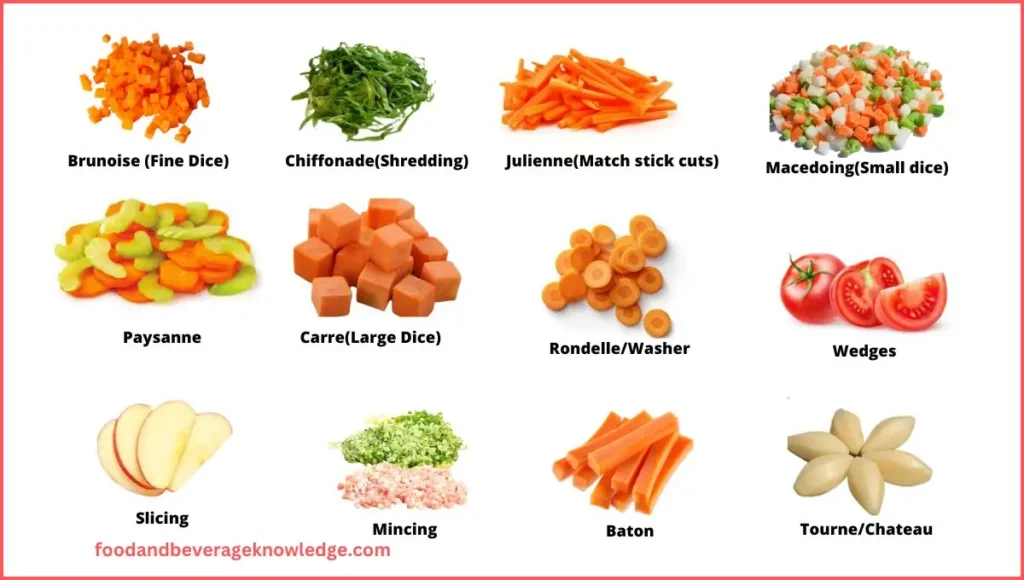
14 different cuts of vegetables with sizes:
1. Brunoise (Fine Dice)
Brunoise is a French cooking term Meaning cutting vegetables into small cubes of precise and uniform measurement. This technique is used to cut vegetables into fine dice. The food should be first julienned and turned into a quarter and diced again to create 1.5 mm cubes.
The food that is Brunoised includes carrots, onions, leeks, celery, bell peppers, and hard root vegetables like beets and turnips.
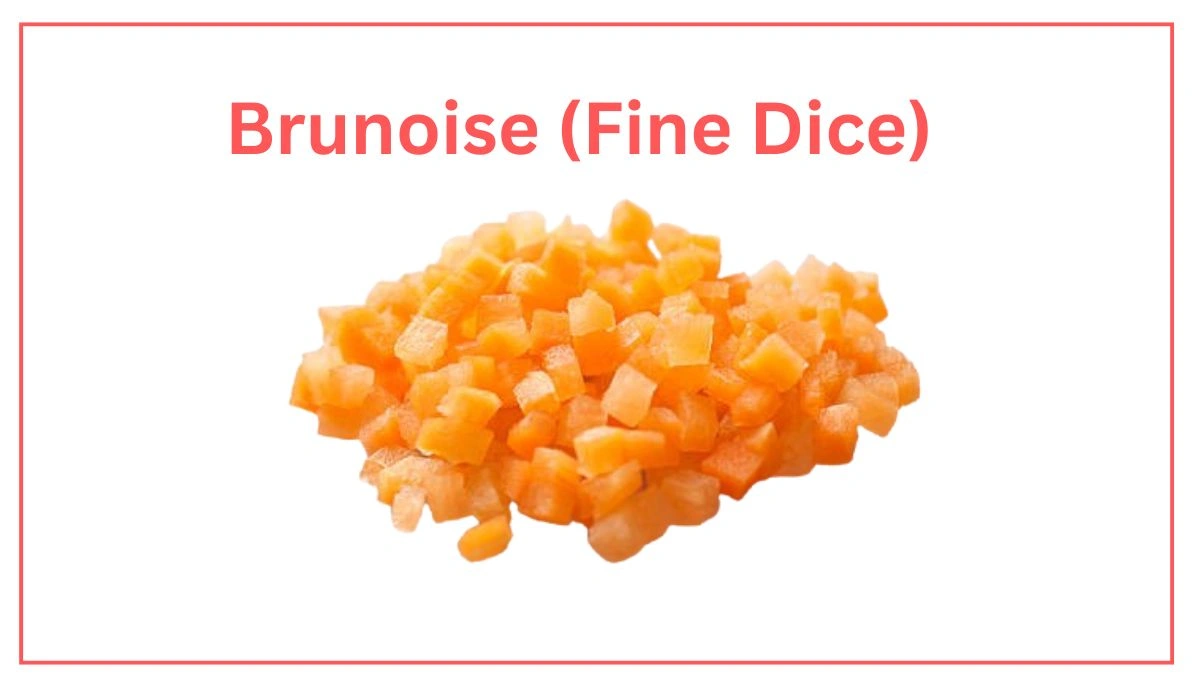
Use: Garnishes, Stuffings
Size: A regular brunoise is 3 mm (1/8th inch) and a fine brunoise 1.5 mm (1/6th inch)
Learn more about Brunoise cut
2. Chiffonade (Shredding)
Chiffonade is a French term that means little ribbons. It is a slicing technique used on leafy green vegetables and herbs such as spinach, sorrel, and flat-leaved herbs like basil, and mint.
This technique is accomplished by stacking leaves, rolling them tightly, then slicing the leaves perpendicular to the roll. Now gently separate the shreds using your fingertips, and you will have chiffonade.
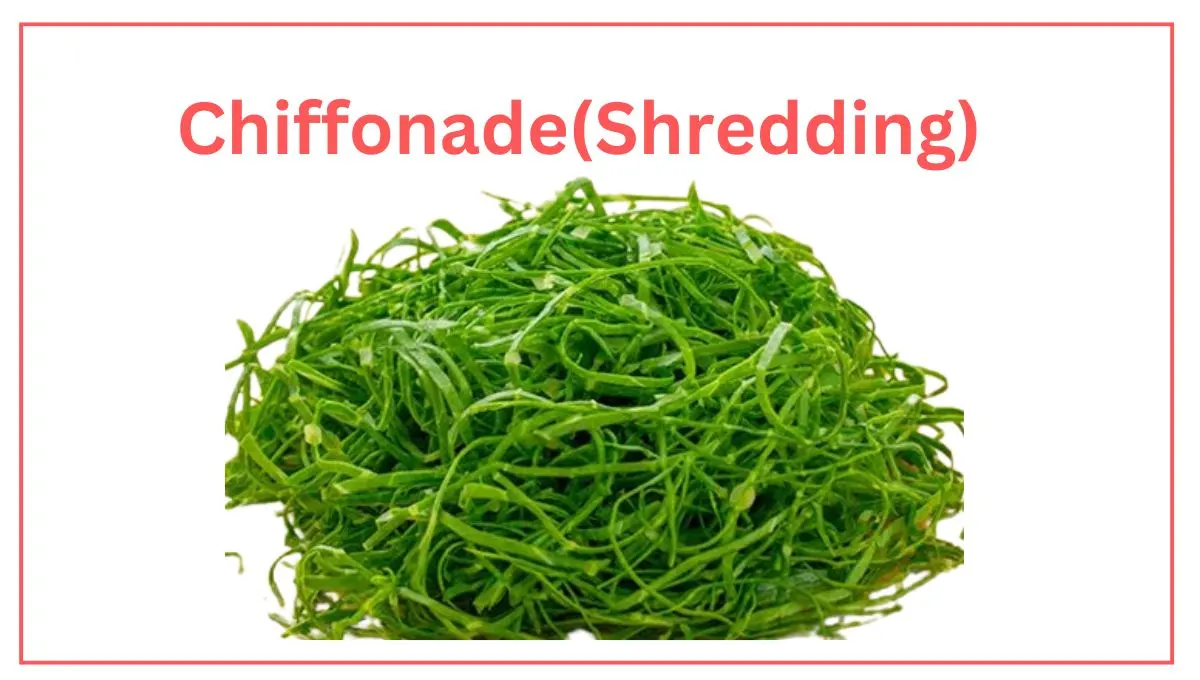
Use: Sautee, Stuffing, Garnish
Size: About 1 mm wide.
Learn more about Chiffonade cut
3. Julienne/allumette (Match stick cuts)
Julienne is a French culinary knife cut technique in which food items are cut into long thin strips similar to a match stick. this technique is often used for salad ingredients and green veggies. The food that is julienned includes carrots, celery, potatoes, and cucumber.
The common vegetable items to be julienned are carrots for carrots julienne, celery for céléris remoulade, potatoes for julienne fries, or cucumbers for naengmyeon.
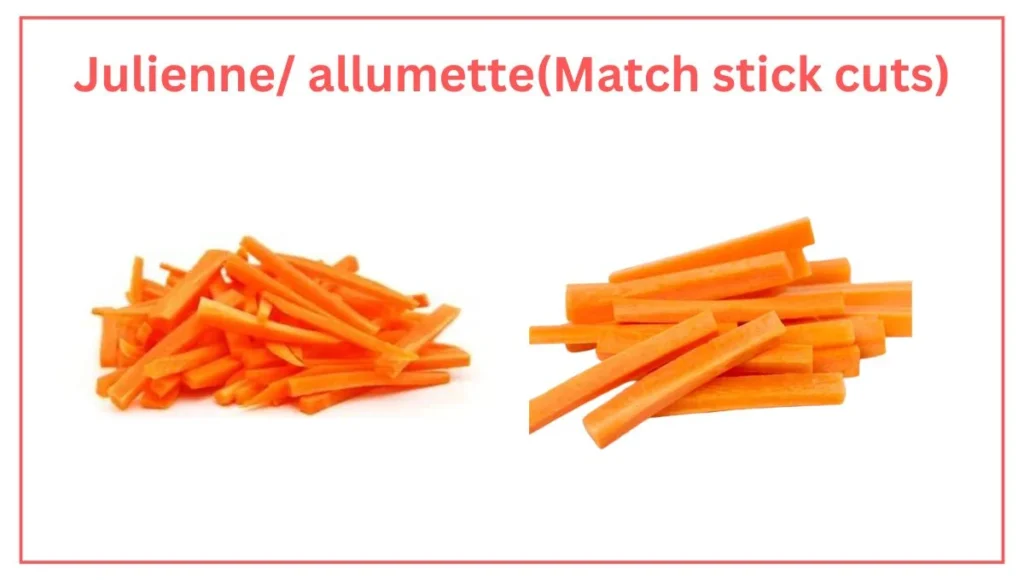
Use: garnishes, Chinese stir-fries, salads
Size: About 3 to 4 cm in length
Read more about Julienne’s cut
4. Macedoine (Small dice)
Macedoine is a French cooking term for a mixture of vegetables, in this technique vegetables should be cut into 1/4-inch dice. This technique is ideal for soup, salad, and large fruit.
Macedoine could be served raw or cooked, cold or hot. A typical fruit macédoine may consist of several varieties of fruit that are marinated in a sweet syrup or liqueur and then served cold or flamed from the alcohol in the liqueur.
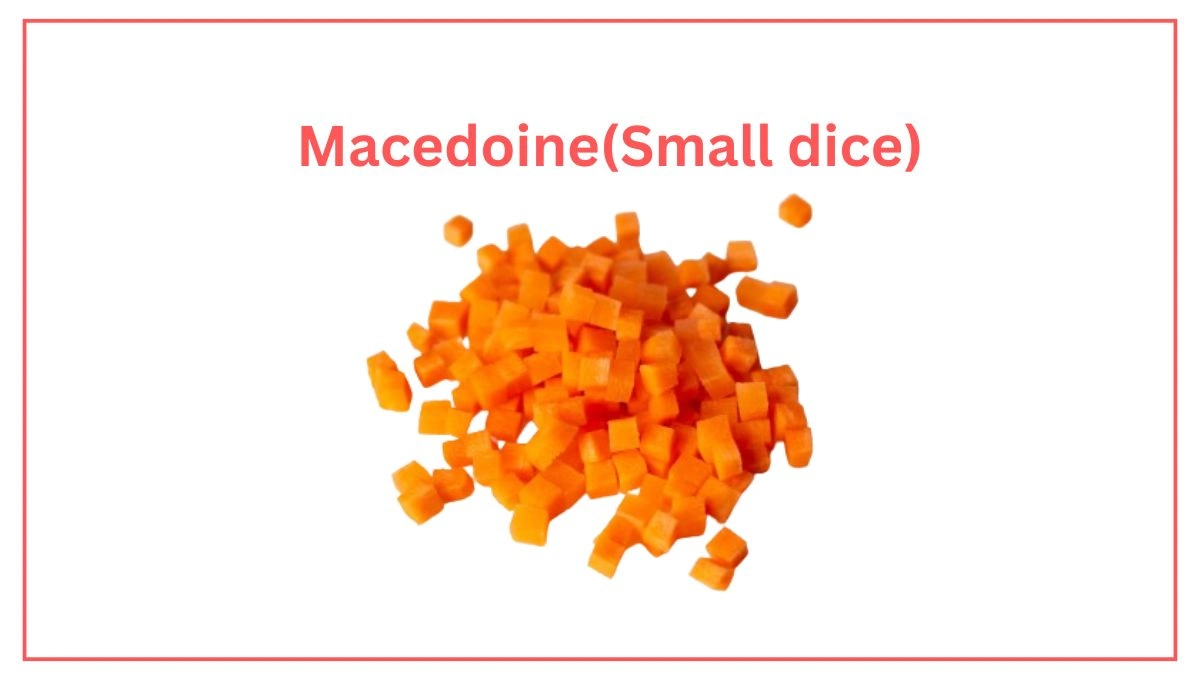
Use: Salads, sautee preparation, soups
Size: 5 mm x 5 mm x 5 mm or (1/4 inches on each side)
Read more about Macedoine’s cut
5. Parmentier (Medium dice)
Parmentier is a medium-size cube cut, it is the same dice style as to make doing just slightly larger around 1.5 cm. Prepare the vegetables as above and then cut them into 1/2″ slices, turn and slice again into 1/2″ slices, now from the top slice 1/2″ cubes.
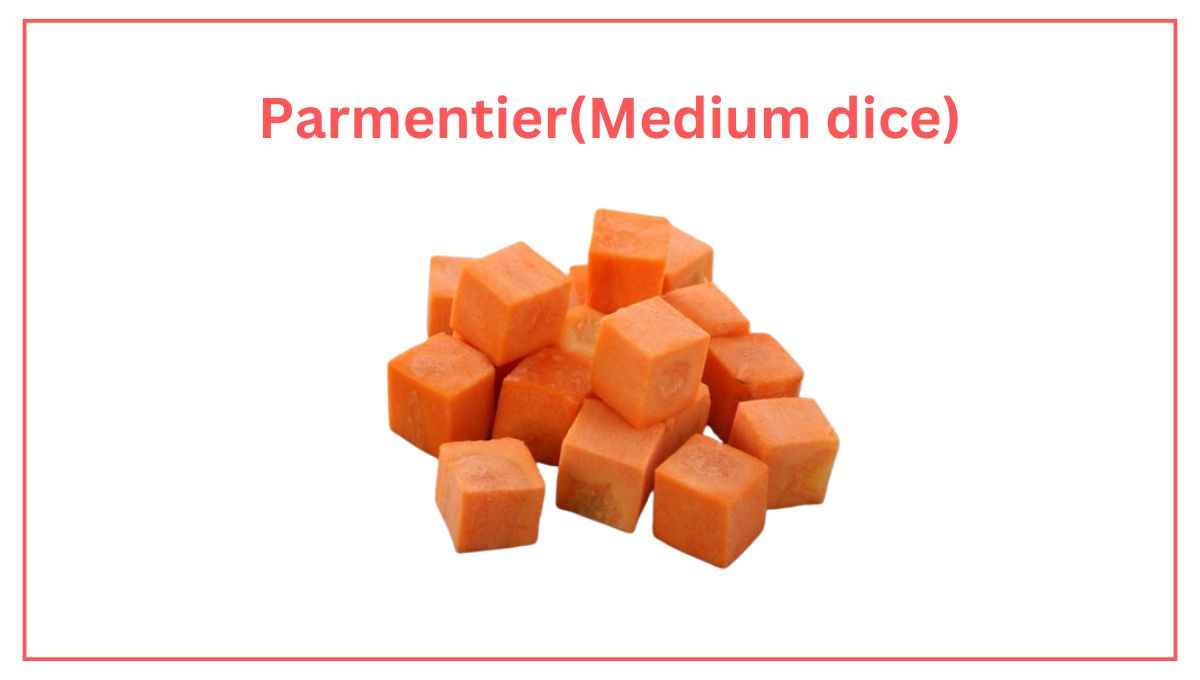
Use: Salads, sautee preparation
Size of Parmentier cut: approximately 1/2 inch (13 mm)
Read more about Parmentier cut
6. Carre (Large Dice)
Carre is a large-size cube cut, “Carré” means “square” in French cut features cubes with 6 even sides measuring approximately 3/4 inches (2 cm).

Use: Salads, sautee preparation, vegetables like potatoes, and sometimes fruits such as watermelon.
Size: 3/4 inches x 3/4 inches x 3/4 inches square (20 mm)
7. Slicing
In this cutting technique, foods are cut into thin and relatively broad slices, this is accomplished by hand or machine. It can be used on meat, vegetables, fruit, cheese, and bread.
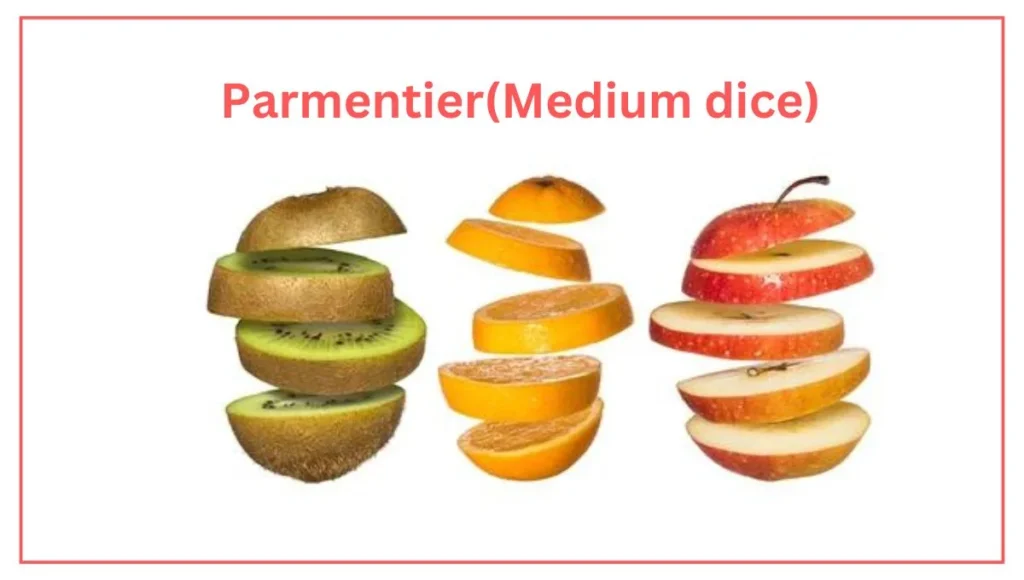
Use: Salads, Baked, Rosts, Grills.
8. Mincing
The mincing technique is used where food ingredients are finely divided into uniform pieces. Minced food is normally smaller than dice or chopped. Mincing is the ideal technique for aromatics, such as onion, garlic, and ginger, it is used when a paste texture is required.

Use: As a herbs, Stuffing, Garnish
9. Crushing
This technique is used to crush food such as ginger, garlic.
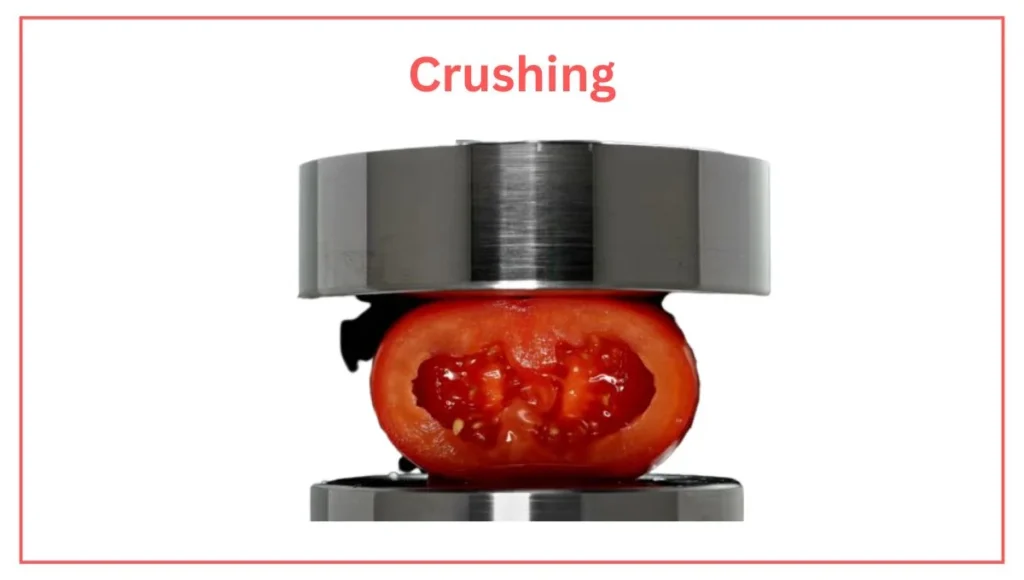
10. Tourne/Chateau
This technique is used to turn vegetables into a barrel shape. It is used on carrot, potatoes, or squash that provide a distinctive and consistent to the food items being served. this is used to enhance the appearance of the food when they are served as part of the main course. The cut always needs seven sides.
Use: Sauteed, Poached, Boiled, Baked
Size: 2 inches by 7 sides

11. Rondelle/Washer
The term rondel means round or circular, this technique is used to cut vegetables or fruits into a round shape. foods like cucumber, zucchini, carrots, cucumber, pineapples, and strawberry are used.
Use: salads, soups, stews and stir-fries.
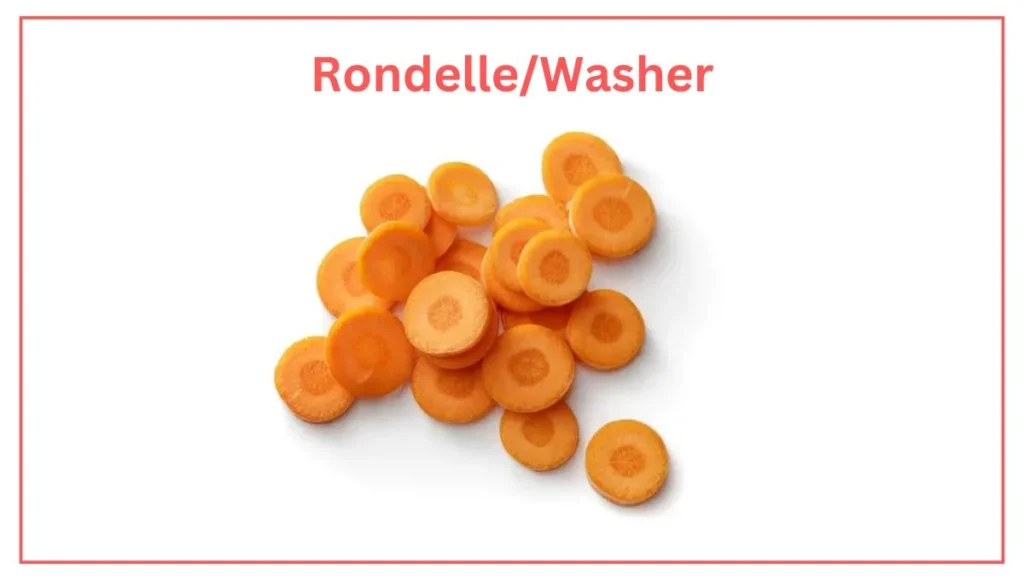
12. Paysanne
Paysanne is a French term that means “country style”, indicating that this is a rougher, more informal cut than other more precise cuts that exist in French cooking. Paysanne cut consists of slices of vegetables about 1mm thick. It is ideal for soup and trims
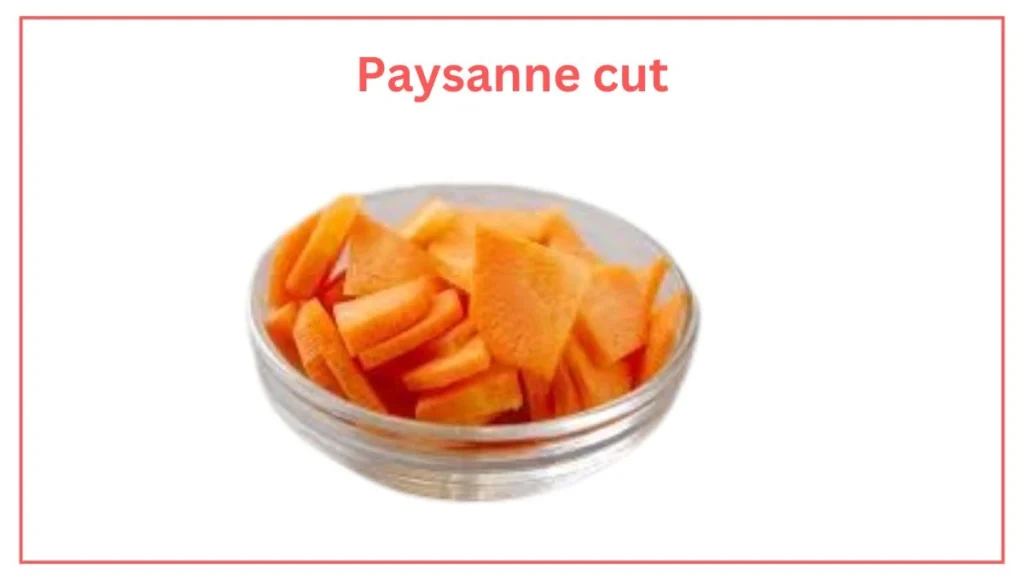
Uses: Sautee preparation, Garnish
Size of paysanne cut: 1/2 by 1/2 by 1/8 inches (10 mm × 10 mm × 3 mm)
13. Wedges
Round vegetables cut equally lengthwise, this technique is used on tomato, potato, lemon, cut into four or six pieces.
Use: Stew, Fried, Grilled, Roasted, Boil, Poached
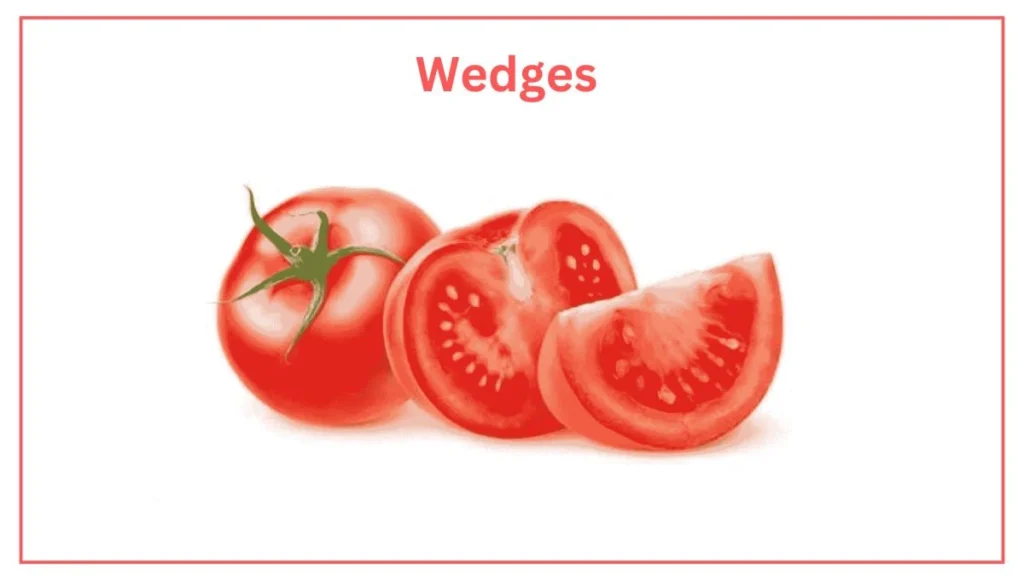
14. Baton
A larger, thicker version of julienne and jardiniere cut, a baton. Sticks of vegetables are approximately 5 cm long, 5 mm wide, and 5 mm thick. Used as an accompaniment.
Use: Sautee preparation, dressings, salads, and steak fries
Size of Baton cut: about 1.5 x 5 cm
